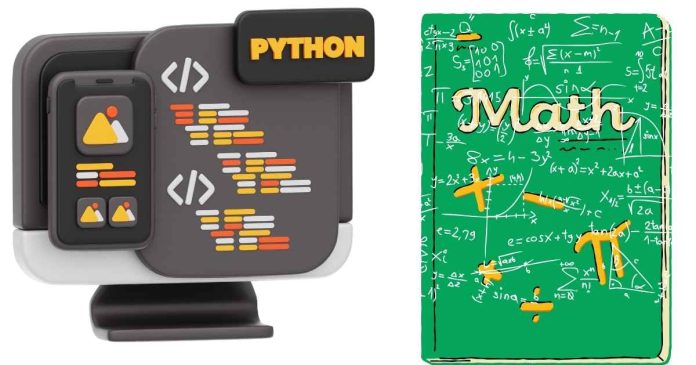In Python, the floor() and ceil() functions are part of the math module and are used to handle floating-point numbers by rounding them down or up to the nearest integer, respectively. These functions are particularly useful in mathematical computations, data processing, and problem-solving where rounding is required.
floor() Function in Python
The floor() function takes a floating-point number and rounds it down to the nearest integer. It always returns the largest integer less than or equal to the given number.
Syntax:
math.floor(x)
- x: The number you want to round down.
- Returns: An integer value.
Example:
import math
print(math.floor(4.7)) # Output: 4
print(math.floor(-4.7)) # Output: -5
Explanation:
- For
4.7,floor()rounds it down to4. - For
-4.7,floor()rounds it down to-5(the next smallest integer).
ceil() Function in Python
The ceil() function takes a floating-point number and rounds it up to the nearest integer. It always returns the smallest integer greater than or equal to the given number.
Syntax:
math.ceil(x)
- x: The number you want to round up.
- Returns: An integer value.
Example:
import math
print(math.ceil(4.3)) # Output: 5
print(math.ceil(-4.3)) # Output: -4
Explanation:
- For
4.3,ceil()rounds it up to5. - For
-4.3,ceil()rounds it up to-4(the next largest integer).
Key Differences Between floor() and ceil()
| Feature | floor() |
ceil() |
|---|---|---|
| Rounding | Rounds down to the nearest integer | Rounds up to the nearest integer |
| Behavior with Positives | Returns the largest integer ≤ x | Returns the smallest integer ≥ x |
| Behavior with Negatives | Moves further away from zero | Moves closer to zero |
Real-World Use Cases
1. Mathematical Calculations
floor(): Useful for partitioning or dividing items into groups without exceeding limits.ceil(): Useful for ensuring minimum requirements are met.
Example:
import math
# Distributing 10 candies among 3 kids
candies = 10
kids = 3
candies_per_kid = candies / kids
print(math.floor(candies_per_kid)) # Output: 3 candies per kid
print(math.ceil(candies_per_kid)) # Output: 4 candies per kid (to ensure each kid gets enough)
2. Data Analysis
- Use
floor()andceil()to group data points or set boundaries for analysis.
3. Game Development
- Rounding player scores, calculating movements, or ensuring limits for positions.
Example:
import math
# Player's health drops by a fraction
damage = 5.8
remaining_health = 20 - math.ceil(damage)
print(remaining_health) # Output: 14 (rounding up damage ensures no underestimation)
Handling Non-Numeric Inputs
Both floor() and ceil() only accept numbers (integers or floats). If you pass invalid inputs (like strings or other types), a TypeError will occur.
Example:
import math
try:
print(math.floor("string")) # Raises TypeError
except TypeError as e:
print(f"Error: {e}")
The floor() and ceil() functions in Python are essential tools for rounding numbers. Whether you need to round down or up, these functions offer simple and efficient solutions for handling floating-point numbers. By understanding their behavior and use cases, you can apply them effectively in a variety of programming tasks. Always remember to import the math module to use these functions!


